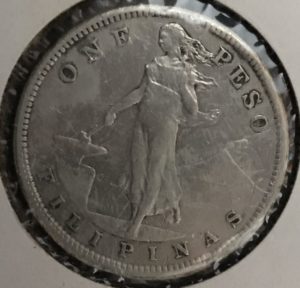Reposting the relevant half of a previous post as it is now reality as I have just received a large quantity of Barako. Additionally, BBotE Ambassador service to Brisbane (Australia) is restored, so feel free to drop Dom a line.

There is a new BBotE selection now available in the store. This is a continued part of my interest in the historical coffees of colonialism and the part of my coin collection I like to call “These Are Also American Coins”. Years ago, sitting in a cafe in Hilo, I saw the marketing line “America’s Only Domestic Coffees” describing the fine produce of the Big Island. I knew this was wrong because I was familiar with the highland crops in Puerto Rico that had been there for centuries, but then mainlanders do seem to have a problem forgetting that PR is part of America. From a coffee point of view, the problem is that most of the historical coffee plantations in the wider American sphere of influence got torn up and replanted, because United Fruit was clearly a transtemporal corporate conspiracy dedicated to replacing things I love (coffee, pineapples) with things I hate (bananas). One moment, I need to go seed a new thread on abovetopsecret.com…
The Philippines have a longer coffee history than any current or former American possession thanks to being the Pearl of the Pacific. Wave after wave of traders and invaders showed up in the archipelago via the Straits of Malacca, heading for Manila, and all of them agreed that coffee was extremely important. Depending on the century, country of origin, and last port of call where they got cargo determined what strain of arabica coffee got taken to what island and then crossed with the native robustas that were already there. Because of this, the Philippines have an astounding amount of diversity in their coffee. Unfortunately, this also means every disease gets transported to the islands too and a blight in the 19th century almost wiped all of them out. The barako strain, rather than being arabica or robusta, is one of the coffee liberica species which was resistant to the disease, allowing the coffee industry there to continue.
The tricky part is getting it. For reasons I’m not quite clear on, the roasters of the American mainland are far more interested in importing Indonesian coffees rather than the Filipino ones. The doesn’t concern the Philippines much as they have plenty of their own roasteries and are every bit as prideful about “my island’s coffee is the best coffee”, much like the different growing regions of Puerto Rico. Lucky for me, as an extremely white man, I have access to the powerful logistics of the Filipino Cousin Network (FCN). If you have not already experienced the power of the FCN, it goes something like this:
- You express an interest in a $THING which is available in the Philippines, usually because your Filipino friend has kindly shared it with you.
- Your Filipino friend says “If you want more of $THING, I can get it for you from the islands.”
- You ask if they are going to the Philippines soon.
- They say no, but their sibling is already there.
- Their sibling’s spouse’s cousin has easy access to $THING.
- Sibling isn’t coming home soon, but sibling’ spouse’s cousin’s dad is a pilot and can just bring it over on his next leg to the States.
- Cousin’s Pilot Dad loves your friend’s grandma’s adobo, so if you can buy the fixings for grandma to make adobo, $THING is yours in the next 48-96 hours.
Your experience of the FCN may vary wildly in levels of complexity but it will be substantially similar in form with this example. A side-effect of the FCN is that there is absolutely no way to keep grandma, any grandma, from knowing absolutely anything she wants to know within the FCN. The grandmas are almost a hive mind, so that joke from Cookie Clicker is frighteningly accurate.
The name of the varietal, barako, is a bit of linguistic appropriation from Spanish. Verraco, Spanish for “wild boar”, became barako with the rough meaning of “stud”, in the animal breeding and machismo senses of the word. It is regarded as bolder than the arabicas and more palatable than robusta, an opinion I’ll agree with. The smell is sharp and the taste is flinty and rich, very much reflecting the fresh, ashy volcanic soils of the island. Not quite slopes of Mt. Pinatubo tephra in flavor, nor Philippine Sea Plate basalt, but a nice mix of the two (forgive me, as the frustrated volcanologist have pulverized and smelled/tasted a lot of different volcanic rocks, particularly from this region). Taking it to my favorite taste testers at St. George Spirits, it apparently mixes with everything they make, and they wiped out the test bottle in very short order. Per Test Subject Shiraz, it smells like eating Reese’s peanut butter cups.